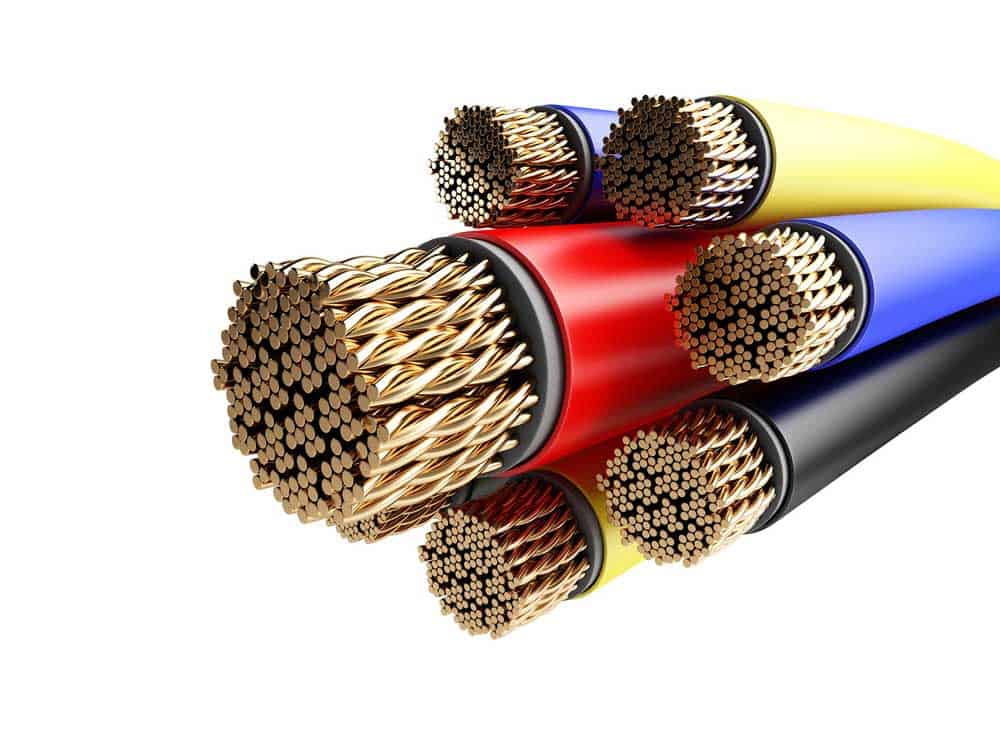- Your #1 Source for Network Cables. Call Now for Exclusive Offers!

The installation of an electrical wiring Bulk Plenum Copper system in a homes and businesses requires a detailed knowledge of the many types of electrical wires and their compatibility. Even a tiny mistake might have serious implications, such as presenting a danger.
This is why most electrical experts and homeowners prefer copper wire in most setups. Copper wire has a number of characteristics that make it a safe electrical cable to use in homes, buildings, and even devices. CCA cable is also frequently used in distribution networks, with numerous aluminum cables buried beneath the road as power cables.
If you’ve looked for Ethernet data cabling recently, you’ve probably seen that Copper Clad Aluminum, or bare copper wire, appears to be a good deal. We’ll go through some of the differences between CCA and bare Bulk Plenum Copper wire in this article.
Bare Copper Cable:
Copper is without a doubt the most widely utilized metal in the world for a variety of uses. Copper is popular not just because of its great heat and electricity conductivity, but also because of its incredible versatility.
Bare Cat5e Plenum Copper cable is not insulated and commonly known as ground wire, provides no protection. Most wires and cables use this sort of copper wire as their foundation. The bare copper wire is solid and hard, but it can be made flexible and could be used as cables in situations where it is not always straight and strong.
The most common application for bare copper cable is in overhead power transmission and distribution. Copper cable that can transport power over great distances is in high demand in today’s developing globe. They are often employed in urban areas.
Some Facts About Bare Copper Cable:
• Copper cable comes in two types in the electric industry: insulated and non-insulated. They’re both used in distinct ways. When meltability and flexibility are required, bare copper wire is often used.
• Depending on the use, a copper cable wire can have numerous supports or a single strand. The well-known green colored thin wire, often known as bare copper wire, is classified as a ground wire.
• Copper wire is the preferred wire in homes because of its high compatibility. Bare copper wire is used in the majority of electrical devices and appliances. As a result, galvanic reactions can occur when other wires are used with bare copper wire.
Keep in mind that combining copper wires with other metal wires can result in galvanization, which can be harmful to the equipment. As a result, copper wire is recommended for use in appliances.
CCA CABLE:
The abbreviation CCA stands for copper clad “aluminum.” CCA is an aluminum conductor with a thin copper coating. The cost of CCA cable is lower. CCA cable, on the other hand, has a lower tensile strength and can be broken down more easily. It may also cause transmission failure in the construction field.
Encasing an aluminum rod in a layer of copper strip is how it’s made. Its main drawbacks when compared to copper are such lack of flexibility, higher resistance, and lower conductivity. Data loss will occur during transmission, even if it claims to have same conductivity as copper.
As a result, transmission speed will drop, and the system will be unable to meet transmission speed requirements in the long run. It’s impossible to see the difference even when the cable jacket of CCA cable is taken back to reveal the twisted pairs. The difference lies in the conductor wire’s structure.
Some Facts About CCA CABLE:
• To begin with, copper is more resistant to corrosion than aluminum. This means that copper can sustain higher draw tensions during installation. With CCA wire, Ethernet data transmissions cannot be carried over long distances.
• As a result, there’s a higher chance of data loss. As more data is re-transmitted, your network will become slower.
• Aluminum wire complicates installation, therefore these cut corners have an impact on installers as well. Because of their reduced tensile strength, aluminum cables can be destroyed when pressed.
Conclusion:
It is widely used in today’s society, making its use necessary. Copper is utilized in both the industrial and home sectors in a variety of ways and for a wide range of applications. Cat6a Plenum Solid Pure Copper is the most frequent metal used in cable manufacturing.
Appliances made of bare copper cable can be recycled. Because bare copper wire does not catch wire, it is highly recommended for appliances that create a lot of heat. They’re safe and won’t melt if you overload them.
CCA, on the other hand, has produced a number of network issues. Lack of compliance, low flexibility, oxidation, and corrosion are among issues that a user may face. It’s also unsuitable for PoE applications.
Copyright © 2024 TS Cables – All Rights Reserved
